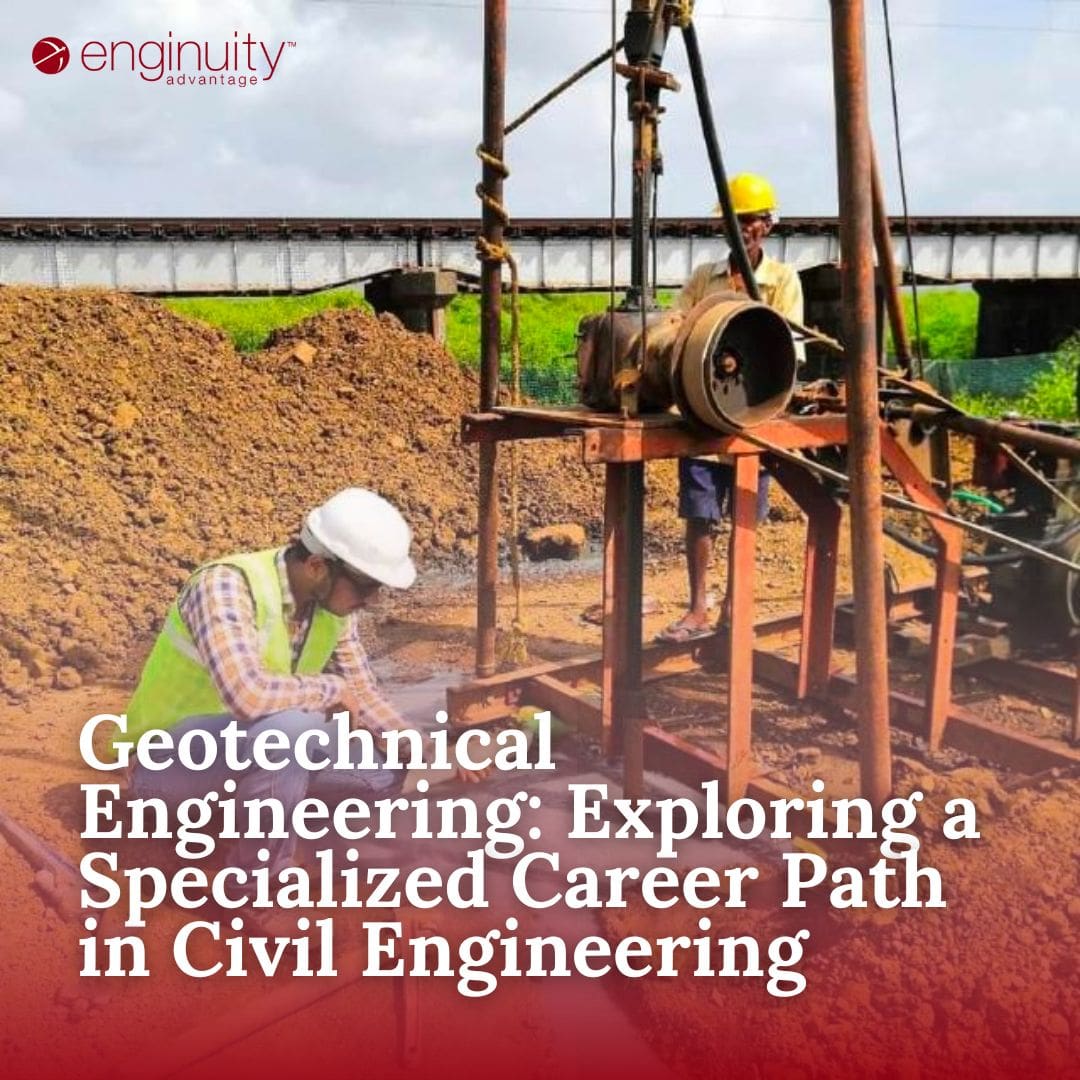Secret Abilities Every Geo Tech Engineer Requirements for Efficient Website Evaluation
Wiki Article
The Interdisciplinary Approaches in the Geotechnical Market: Linking the Gap In Between Engineering, Geology, and Environmental Scientific Research for Optimal Task Results
The integration of engineering, geology, and environmental scientific research within the geotechnical sector is not simply advantageous; it is necessary for achieving optimum project results. What techniques might arise to promote this important cooperation and enhance the efficiency of geotechnical practices?Value of Interdisciplinary Partnership
The value of interdisciplinary collaboration in the geotechnical sector can not be overemphasized. Efficient geotechnical jobs need the combination of diverse know-how from numerous fields, including design, geology, and ecological scientific research. This cooperation makes sure that all elements of a task are thought about, resulting in comprehensive options that resolve intricate obstacles.When working in isolation,Interdisciplinary collaboration fosters technology by enabling professionals to share understandings and approaches that might not be evident. By leveraging the staminas of multiple self-controls, groups can identify possible threats, maximize layout procedures, and improve the sustainability of geotechnical tasks. Additionally, such cooperation promotes an alternative understanding of site-specific conditions, which is essential for precise evaluation and decision-making.
The complexity of geotechnical tasks necessitates a collaborated strategy to analytical. When engineers, rock hounds, and ecological researchers work together, they can produce a natural strategy that lines up technological demands with environmental factors to consider and regulatory compliance. This synergy not only enhances project end results but additionally contributes to the long-lasting strength of infrastructure. Eventually, interdisciplinary cooperation is important for advancing best methods and attaining excellence in the geotechnical sector.
Secret Roles of Each Technique
Partnership amongst numerous disciplines is not simply useful; it is important for the successful implementation of geotechnical projects. Each technique-- engineering, geology, and ecological scientific research-- plays a distinctive yet interconnected duty that adds to forecast effectiveness and sustainability.Geotechnical designers are largely liable for designing structures and making sure architectural integrity. They analyze dirt and rock homes to examine load-bearing abilities, giving crucial information for safe building and construction techniques. Their knowledge enables the formula of cutting-edge remedies to complex difficulties.

Ecological scientists analyze the prospective impacts of building on environments and water sources. They carry out environmental assessments and create mitigation methods to decrease negative results. By incorporating environmental considerations, they make sure compliance with guidelines and advertise sustainability throughout the project lifecycle.
Case Researches of Successful Assimilation
Effective integration of geotechnical self-controls can be exemplified via various case studies that highlight the efficiency of team effort in addressing complicated engineering challenges. One notable instance is the building and construction of the Hong Kong-- Zhuhai-- Macau Bridge, where a collective method including geotechnical engineering, geology, and environmental scientific research was crucial. Designers and geologists operated in unison to analyze the seabed problems and optimize the foundation design, making certain security and lessening environmental influence.Another impactful situation is the improvement of slope security in the San Francisco Bay Area, where an interdisciplinary group incorporated geotechnical evaluation with ecological analyses. By incorporating geological studies and hydrological researches, the group efficiently identified potential landslide threats and implemented effective reduction actions, enhancing safety and sustainability.
In addition, the redevelopment of Brownfield sites commonly needs a multidisciplinary method. In one instance in Chicago, cooperation among geotechnical engineers, environmental researchers, and metropolitan planners led to the effective remediation of infected soil, permitting for the secure change of the site right into a community park. These situation research studies show that interdisciplinary collaboration not only addresses technological obstacles but likewise cultivates ingenious remedies that profit both areas and jobs.
Challenges in Multidisciplinary Projects

In addition, coordinating schedules and operations amongst different groups can be troublesome, particularly when each discipline has one-of-a-kind project milestones and deliverables. This imbalance can result in hold-ups and raised prices. The obstacle of source allocation likewise looms big; guaranteeing that specific experience is readily available at critical points requires cautious planning and foresight.
Lastly, regulatory conformity poses another significant obstacle. Each discipline may face various governing frameworks, and aligning these requirements to meet project purposes can be complex and taxing. Addressing these obstacles requires solid leadership and efficient communication methods to cultivate cooperation and make certain that multidisciplinary groups function cohesively towards shared objectives.
Future Trends in Geotechnical Practices
As the geotechnical market advances, emerging patterns are improving methods to resolve the challenges faced in multidisciplinary tasks - geotechnical engineers. One substantial trend is the enhanced integration of advanced innovations, such as synthetic intelligence and artificial intelligence, into geotechnical evaluation and layout. These innovations boost predictive modeling and danger assessment, enabling designers to make more educated choices throughout the project lifecycle
Furthermore, the adoption of digital doubles and real-time surveillance systems consulting engineer is becoming much more widespread. These tools facilitate recurring assessment of soil conditions and architectural efficiency, permitting for prompt interventions when issues occur.
Conclusion
In final thought, the integration of design, geology, and ecological science is vital for achieving optimum results in the geotechnical sector. Effective instance studies illustrate the advantages of this approach, while acknowledging the difficulties faced in multidisciplinary projects.The combination of engineering, geology, and environmental science within the geotechnical industry is not merely advantageous; it is critical for attaining ideal project end results. Effective geotechnical projects call for the combination of diverse proficiency from different fields, consisting of design, geology, and environmental science.Browsing the complexities of multidisciplinary tasks in the geotechnical industry provides a number of considerable obstacles.As the geotechnical market advances, arising trends are improving practices to deal with the challenges faced in multidisciplinary tasks. Geotechnical engineers are progressively working together with ecological researchers to ensure that tasks straighten with sustainability objectives and abide with regulatory requirements.
Report this wiki page